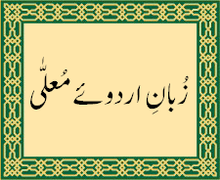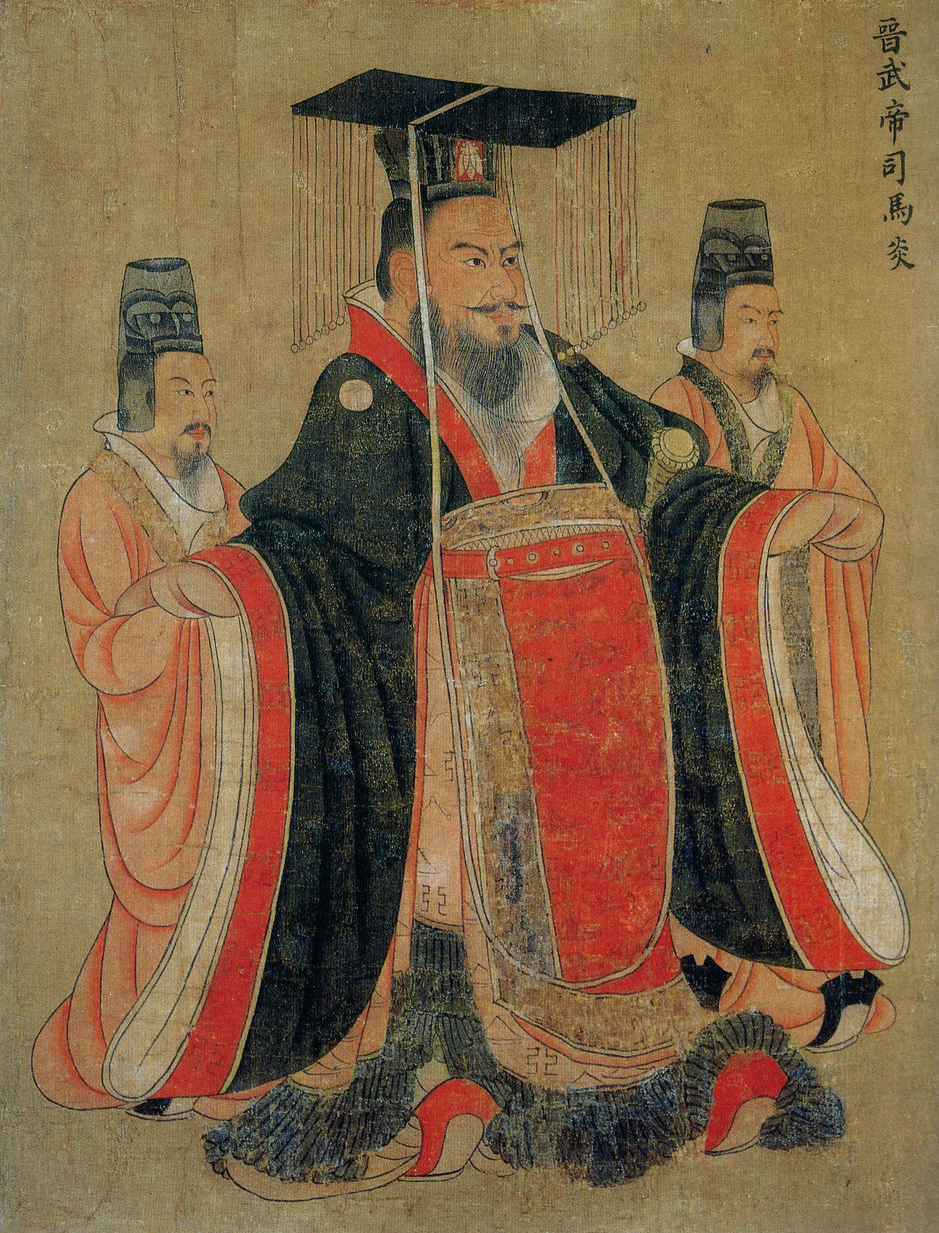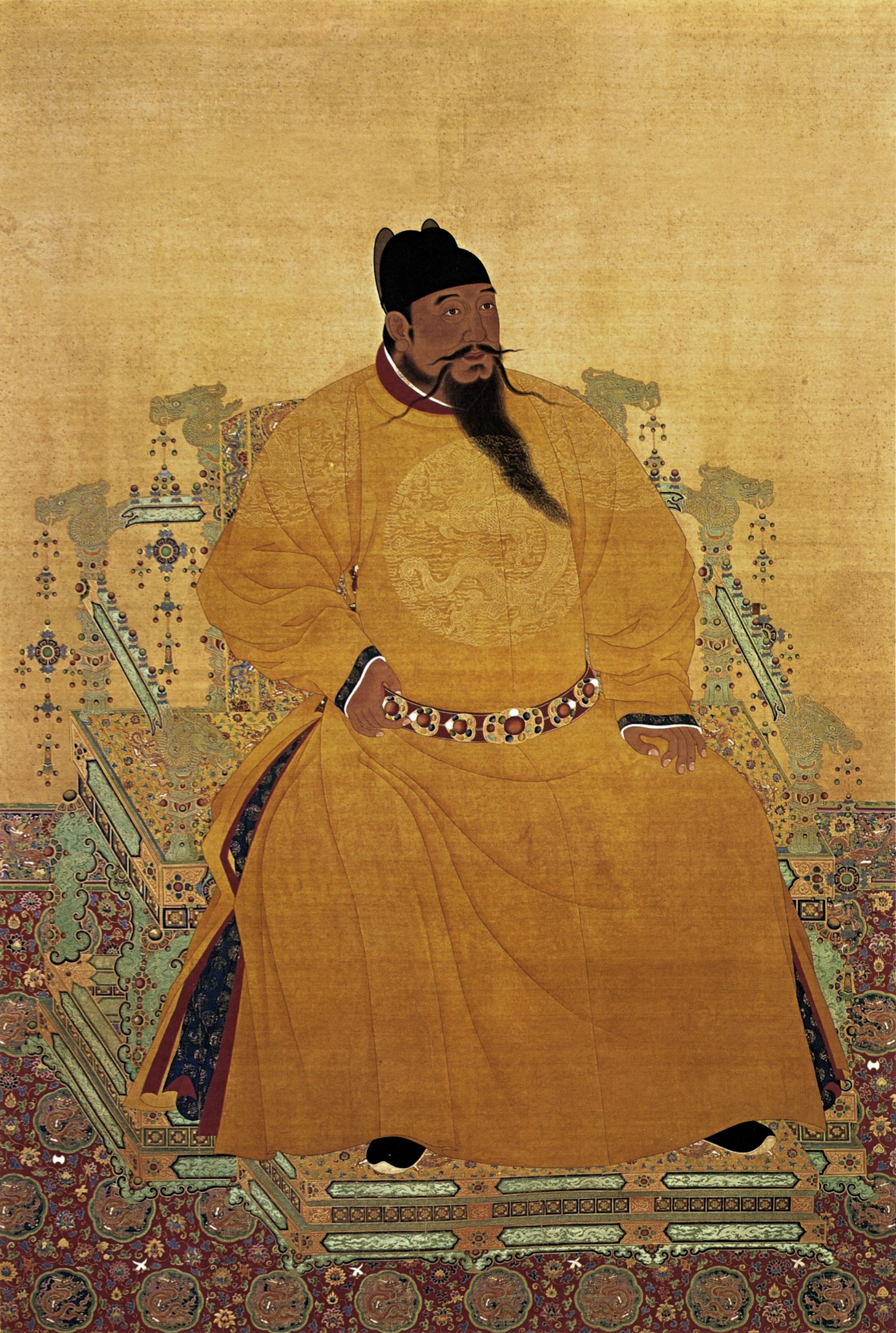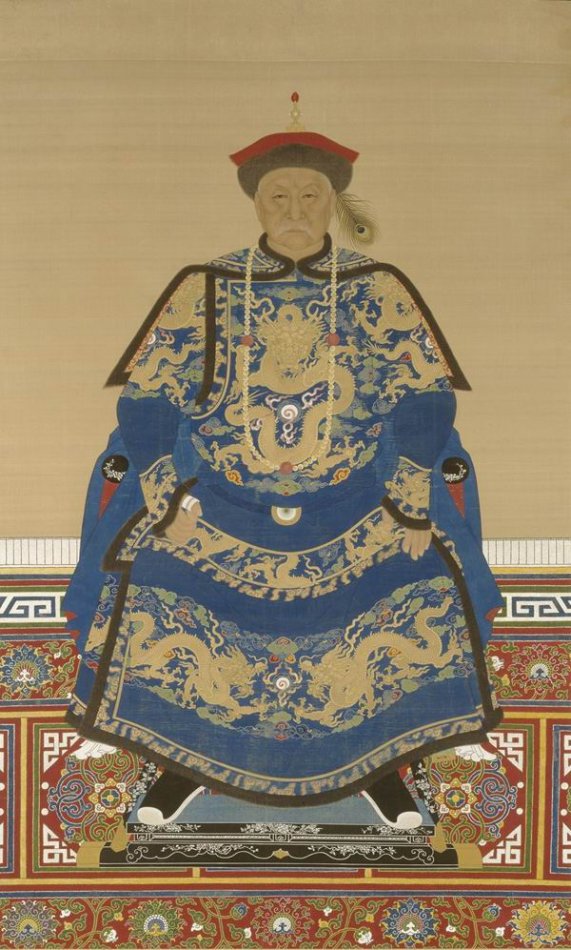About the Mongoloid Race, for the Mongoloid Race of Golden Skin - its Beauty, Diversity, Glory and Greatness. To revive the former Glory of the Mongoloid Race and to unify all Mongoloid Ethnic Groups is my desire and goal. To give opportunities, hope, possibilities and a shared future to all Mongoloid peoples under oppression in this age and to begin a prosperous era of The First Great Mongoloid Empire.
Monday, August 29, 2016
South Korea My first visitor
Indians getting cuckolded all over the place
USA as always everywhere
United Kingdom - probably British Indians getting cuckolded
Canada - nothing to say about them- maple syrup
Saudi Arabia - again, most likely overseas Indians getting cuckolded
Turkey - there's always a few Turkified Anatolians reading my blog, good stuff, planning a post on Suleyman the Magnificient
Switzerland- no idea, might be a Chinese- Swiss man
Finally a South Korean visitor. Congrats Spread the message, brother
Malaysia - Hopefully a Malay or Chinese Man not an inbred looking Hindu Malaysian
Labels:
asian,
china,
east asia,
indonesia,
japan,
kazakhstan,
korea,
korean,
kyrgystan,
malaysia,
mongolia,
mongoloid,
native american,
north korea,
polynesia,
south korea,
taiwan,
thailand,
tibet,
vietnam
Saturday, August 27, 2016
Thursday, August 25, 2016
Let's be honest - Princess Heer Kunwari and Hamida Banu Begum loved that fat girthy beautiful Mongoloid Turko- Mongol D...Dominance and Masculinity
Riya Sen(height: 155 cm)/ Bipasha Basu as Mariam-uz-Zamani Begum (Jodha) (Persian: مریم الزمانی, lit. 'Mary of the Age'[4]), a title bestowed to Heer Kunwari, Hira Kunwari, Harka Bai or Jodha Begum (1 October 1542 – 19 May 1623), was an Empress of the Mughal Empire.
She was the first Chief Rajput wife of Emperor Akbar (though Akbar already had two other Chief Mughal wives and many other wives from different religions before and after his marriage to the Rajput Princess Heer Kunwari), and the mother of the next Mughal Emperor, Jahangir.[5][6][7] She was also the grandmother of the following Mughal Emperor Shah Jahan and great grand mother of last great ruler Emperor Aurangzeb and Mughal crown prince Dara Shikoh.[8]
Mariam-Uz-Zamani was referred to as the Queen Mother[9] of Hindustan, during the reign of the Great Mughal,[10] Emperor Akbar and also during her son Emperor Jahangir's reign. She was the longest serving Hindu Mughal Empress. Her tenure, from 6 February 1562 to 27 October 1605, is that of over 43 years.
Her marriage to Akbar led to a gradual shift in his religious and social policy.[11] Akbar's marriage with Rajkumari Heer Kunwari was a very important event in Mughal history. She is widely regarded in modern Indian historiography as exemplifying Akbar's and the Mughal's tolerance of religious differences and their inclusive policies within an expanding multi-ethnic and multi-denominational empire.[12]
Bollywood movies need some real historical racial accuracy. No more ugly fuckedfaced inbred looking beta race inferior brownskin actors to play Handsome Masculine Superior Mongoloid Alpha Males and Warriors and Conquerors. Don't try to brownwash your pathetic history. You know we conquered you pathetic beta race inferior indo aryan shitstains on and off for more than 700 years (and that's just the Middle Ages), don't hide it. Get that Indian pussy some Thick Mongoloid Cock, she'll love it and so will you.
It's not my fault you brownskin betas can only claim to have conquered yourselves. Had you attempted to wage war towards the north, you would have met your downfall, the destruction of your armies, the burning of your cities and the raping of your women anyway. Your greatest Empire was the Mauryan Empire and it too was created by a Mongoloid Man. Yes, Chandragupta, the man who beat the greek bitch seleucid nicator and married one of his pretty little greek daughters, and his Dynasty was not indo aryan. He considered himself to be of the Sakya line of Kshatriyas which is the lineage of Gautama Buddha/ Siddhart Gautam, a true Mongoloid Man. Ashoka Maurya, thought by all modern brownskins to have been the greatest indian emperor, who for the first time in the history of the Subcontinent unified North and South India, whose Iconic Lions are now part of the national emblem of India, billed himself as "Buddhi Sakya" in his inscriptions, naming himself after his great religious ancestor Gautama Buddha Sakyamuni.
And even then the Mongoloid Mauryan Empire could never be compared to the likes of the Han Dynasty, the Mongol Empire or the Great Warring States Period of Zhongguo in Civilizational and Military Sophistication. The Four Great Generals of the Warring States would have laid waste to Central Asia, Persia, India, Arabia and Greece all the same.
Remember Mahmud of Ghazni? The destiny of the beta races is to always be subservient to the Superior Goldenskinned Mongoloid Man. Just accept it and make your mothers, daughters, wives and sisters worship us - it will benefit all of us. They have been waiting for the next conquest of the Subcontinent by the Mongoloid Man for some 200 years now, they can feel it coming in their wombs, they sense that it is close. I will give you some advice so you can at least put up a fight: The Mongoloid Mauryans conquered Indian pussy from East India, the Turks and Mongols conquered Indian pussy from the North. Figure it out yourself, inferior brownskin incel.
 |
| Colored Chinese Version |
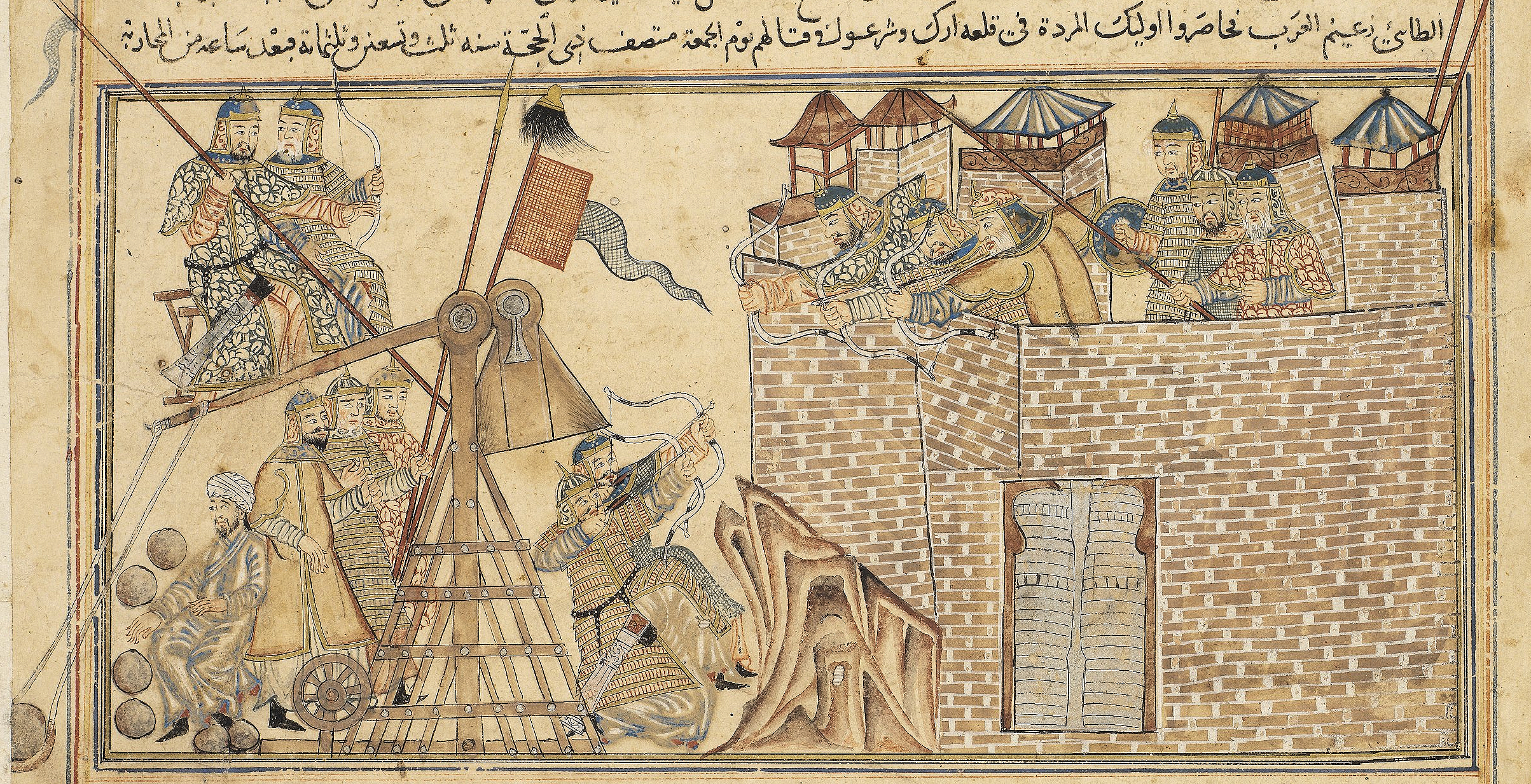 |
| Mahmud of Ghazni |
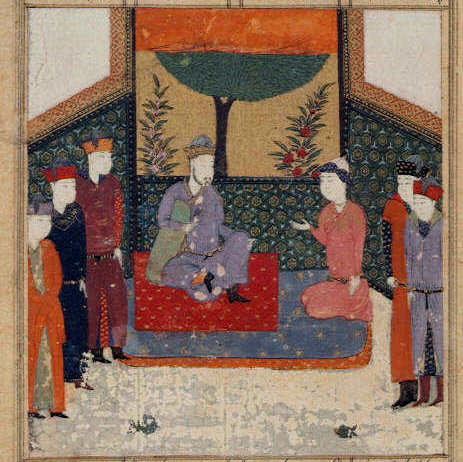 |
| Mahmud Ghaznavi |
 |
| Babur |
The actress playing the main female lead in the video above conveniently has a Thai- Indian mother and a Thai Chinese father.
Bomb Tanin Manonsilp (born 1990 in Thailand, height: 190 cm) as Akbar
Abu'l-Fath Jalal ud-din Muhammad Akbar, popularly known as Akbar I (IPA: [əkbər], literally "the great"; 15 October 1542[a]– 27 October 1605)[6][7] and later Akbar the Great (Urdu: Akbar-e-Azam; literally "Great the Great"),[8] was Mughal Emperor from 1556 until his death.
He was the third and one of the greatest rulers of the Mughal Dynasty in India. Akbar succeeded his father, Humayun, under a regent, Bairam Khan, who helped the young emperor expand and consolidate Mughal domains in India. A strong personality and a successful general, Akbar gradually enlarged the Mughal Empire to include nearly all of the Indian Subcontinent north of the Godavari river.
His power and influence, however, extended over the entire country because of Mughal military, political, cultural, and economic dominance. To unify the vast Mughal state, Akbar established a centralised system of administration throughout his empire and adopted a policy of conciliating conquered rulers through marriage and diplomacy. To preserve peace and order in a religiously and culturally diverse empire, he adopted policies that won him the support of his non-Muslim subjects. Eschewing tribal bonds and Islamic state identity, Akbar strived to unite far-flung lands of his realm through loyalty, expressed through a Persianised culture, to himself as an emperor who had near-divine status.
Mughal India developed a strong and stable economy, leading to commercial expansion and greater patronage of culture. Akbar himself was a patron of art and culture. He was fond of literature, and created a library of over 24,000 volumes written in Sanskrit, Hindustani, Persian, Greek, Latin, Arabic and Kashmiri, staffed by many scholars, translators, artists, calligraphers, scribes, bookbinders and readers. Holy men of many faiths, poets, architects and artisans adorned his court from all over the world for study and discussion. Akbar's courts at Delhi, Agra, and Fatehpur Sikri became centres of the arts, letters, and learning. Perso-Islamic culture began to merge and blend with indigenous Indian elements, and a distinct Indo-Persian culture emerged characterised by Mughal style arts, painting, and architecture.
Disillusioned with orthodox Islam and perhaps hoping to bring about religious unity within his empire, Akbar promulgated Din-i-Ilahi, a syncretic creed derived from Islam, Hinduism, Zoroastrianism, and Christianity. A simple, monotheistic cult, tolerant in outlook, it centred on Akbar as a prophet, for which he drew the ire of the ulema and orthodox Muslims.(This Mongoloid Man wanted people to worship him as a God. Genius.)
Akbar's reign significantly influenced the course of Indian history. During his rule, the Mughal empire tripled in size and wealth. He created a powerful military system and instituted effective political and social reforms. By abolishing the sectarian tax on non-Muslims and appointing them to high civil and military posts, he was the first Mughal ruler to win the trust and loyalty of the native subjects. He had Sanskrit literature translated, participated in native festivals, realising that a stable empire depended on the co-operation and good-will of his subjects. Thus, the foundations for a multicultural empire under Mughal rule was laid during his reign. Akbar was succeeded as emperor by his son, Jahangir.
 |
| Young Babur hunting. Get the man a proper Mongol saber with a thick backedge. |
Akbar was said to have been a wise emperor and a sound judge of character. His son and heir, Jahangir, wrote effusive praise of Akbar's character in his memoirs, and dozens of anecdotes to illustrate his virtues.[161] According to Jahangir, Akbar was "of the hue of wheat(Goldenskinned Mongoloid Man right here); his eyes and eyebrows were black and his complexion rather dark than fair". Antoni de Montserrat, the Catalan Jesuit who visited his court described him as follows:
"One could easily recognize even at first glance that he is King. He has broad shoulders, somewhat bandy legs well-suited for horsemanship(Can't even question whether he was more Persian or Mongol in appearance anymore, obviously a Mongol feature), and a light brown complexion. He carries his head bent towards the right shoulder. His forehead is broad and open(Mongoloid feature, larger cranial capacity than all you beta races), his eyes so bright and flashing that they seem like a sea shimmering in the sunlight. His eyelashes are very long(Must be his mother's effeminate Persian genetic influence). His eyebrows are not strongly marked(Ah, yes, Mongoloid Man for sure). His nose is straight and small though not insignificant(Ah, yes, Mongoloid Man no doubt). His nostrils are widely open as though in derision. Between the left nostril and the upper lip there is a mole. He shaves his beard but wears a moustache. He limps in his left leg though he has never received an injury there(Trying to emulate his ancestor Tamerlane and shit, maybe that's what made him so successful)."[162]
Akbar was not tall but powerfully built and very agile. He was also noted for various acts of courage. One such incident occurred on his way back from Malwa to Agra when Akbar was 19 years of age. Akbar rode alone in advance of his escort and was confronted by a tigress who, along with her cubs, came out from the shrubbery across his path. When the tigress charged the emperor, he was alleged to have dispatched the animal with his sword in a solitary blow. His approaching attendants found the emperor standing quietly by the side of the dead animal(Alpha Male Mongol Warrior Shit, killing Indian tigers instead of Siberian ones, not unlike Ashoka of the Mauryan Empire, strong and powerful Mongoloid Men with the blood of Conquerors wouldn't be afraid of wild animals).[163]
Abul Fazal, and even the hostile critic Badayuni, described him as having a commanding personality. He was notable for his command in battle, and, " was always ready to risk his life, regardless of political consequences". He often plunged on his horse into the flooded river during the rainy seasons and safely crossed it. He rarely indulged in cruelty and is said to have been affectionate towards his relatives. He pardoned his brother Hakim, who was a repented rebel. But on rare occasions, he dealt cruelly with offenders, such as his maternal uncle Muazzam and his foster-brother Adham Khan, who was twice defenestrated for drawing Akbar's wrath.[164]
He is said to have been extremely moderate in his diet. Ain-e-Akbari mentions that during his travels and also while at home, Akbar drank water from the Ganges river, which he called 'the water of immortality'. Special people were stationed at Sorun and later Haridwar to dispatch water, in sealed jars, to wherever he was stationed. According to Jahangir's memoirs, he was fond of fruits and had little liking for meat, which he stopped eating in his later years.
To defend his stance that speech arose from hearing, he carried out a language deprivation experiment, and had children raised in isolation, not allowed to be spoken to, and pointed out that as they grew older, they remained mute.
Bomb Tanin is going to fuck and breed Riya Sen/ Biapasha Basu to the music of Jay Park. Romantically. But then again, he's also into facefucking and receiving rimjobs. No worries, he'll treat her well. He'll send you videos of it for you to enjoy.
Pham Anh Tuan as Jahangir(height: 187 cm// Isn't it funny how a full Mongoloid Vietnamese Man could just replace any brownskin actor with his phenotype and play any brownskin role more convincingly with his casual masculine charisma? This man is basically the truest personification of the Male Ideal the subcontinentals are striving for when they cast lightskinned brownskin actors all of whom fail miserably to reach his standard. Worship the Mongoloid Man. Worship his greatness, beauty, mercy, noble spirit, power and diversity, worship him at his feet.)
 |
| Continuing all the good Mongol and Turkic traditions. Hunting with eagles and shit like a true Kazakh. |
Mirza Nur-ud-din Beig Mohammad Khan Salim, known by his imperial name Jahangir (Persian name) "conqueror of the world" (August 31, 1569 – November 7, 1627), was the fourth Mughal Emperor who ruled from 1605 until his death in 1627. His throne name Jahangir means 'conqueror of the world', 'world-conqueror' or 'world-seizer' (Jahan = world, gir the root of the Persian verb gereftan, gireftan = to seize, to grab). Much romance has gathered around his name, and the tale of his illicit relationship with the Mughal courtesan, Anarkali, has been widely adapted into the literature, art and cinema of India.
 |
| Damn, those Mongol genes were strong. He looks like a Chinaman. |
Jahangir was the eldest surviving son of Mughal Emperor Akbar. Impatient for power,he revolted in 1599 while Akbar was engaged in the Deccan. Jahangir was defeated, but ultimately succeeded his father as Emperor in 1605 because of the immense support and efforts of the ladies in Akbar's harem like Ruqaiya Sultan Begum, Salima Sultan Begum and his grandmother Maryam Makani. The ladies wielded considerable influence over Akbar and favoured Jahangir as his successor. The first year of Jahangir's reign saw a rebellion organised by his eldest son Khusrau. The rebellion was soon put down; Khusrau was brought before his father in chains. After subduing and executing nearly 2000 members of the rebellion, Jahangir blinded his renegade son.
Jahangir built on his father's foundations of excellent administration and his reign was characterised by political stability, a strong economy and impressive cultural achievements. The imperial frontiers continued to move forward—in Bengal, Mewar, Ahmadnagar and the Deccan. Later during his rule, Jahangir was battling his rebellious son Khurram in Hindustan. The rebellion of Khurram absorbed Jahangir's attention, so in the spring of 1623 he negotiated a diplomatic end to the conflict. Much of India was politically pacified; Jahangir's dealings with the Hindu rulers of Rajputana were particularly successful, and he settled the conflicts inherited from his father. The Hindu rulers all accepted Mughal supremacy and in return were given high ranks in the Mughal aristocracy.
Jahangir was fascinated with art, science and architecture. From a young age he showed a leaning towards painting and had an atelier of his own. His interest in portraiture led to much development in this artform. The art of Mughal painting reached great heights under Jahangir's reign. His interest in painting also served his scientific interests in nature. The painter Ustad Mansur became one of the best artists to document the animals and plants which Jahangir either encountered on his military exhibitions or received as donations from emissaries of other countries. Jahangir maintained a huge aviary and a large zoo, kept a record of every specimen and organised experiments. Jahangir patronised the European and Persian arts. He promoted Persian culture throughout his empire. This was especially so during the period when he came under the influence of his Persian Empress, Nur Jahan and her relatives, who from 1611 had dominated Mughal politics. Amongst the most highly regarded Mughal architecture dating from Jahangir's reign is the famous Shalimar Gardens in Kashmir. The world's first seamless celestial globe was built by Mughal scientists under the patronage of Jahangir.
Jahangir was not without his vices. He set the precedent for sons rebelling against their emperor fathers and was much criticised for his addiction to alcohol, opium, and women. He was thought of allowing his wife, Nur Jahan, too much power and her continuous plotting at court is considered to have destabilised the imperium in the final years of his rule. The situation developed into open crisis when Jahangir's son, Khurram, fearing to be excluded from the throne, rebelled in 1622. Jahangir's forces chased Khurram and his troops from Fatehpur Sikri to the Deccan, to Bengal and back to the Deccan, until Khurram surrendered unconditionally in 1626. The rebellion and court intrigues that followed took a heavy toll on Jahangir's health. He died in 1627 and was succeeded by Khurram, who took the imperial throne of Hindustan as the Emperor Shah Jahan.
Jahangir was a naturalist as well; he was not only a known birdwatcher or ornithologist but a keen observer of plants and animals as well. Tuzuk-i-Jahangiri(Memoirs of Jahangir) has his recorded observations. Even until the mid-nineteenth century zoologists were unaware of the gestation period of elephants but Jahangir on the other hand had accurately estimated the gestation period of elephants to be 18 to 19 months in the early-seventeenth century itself. He gave the details of the pairing of sarus cranes and detailed descriptions of many Indian birds such as the hawk-cuckoo and animals such as the polecat. Once he was presented with a Don of high-altitude trees on the plains. Once he conducted an experiment to show that the soil in Mahmudabad was healthier than in Ahmedabad(both in Gujarat). (Innovative scientific Mongoloid Man giving you brownskin beta race bitches achievements for you to claim)
Deepika Padukone/ Ileana D'Cruz as Taj Bibi Bilqis Makani Begum Sahiba (Urdu:تاج بیبی بلقیس مکانی بیگم صاحبہ), also known as Rajkumari Shri Manavati Baiji Lall Sahiba, Princess Manmati, Jagat Gosain, Jodha Bai[1] (May 13, 1573 – April 18, 1619) was an Empress of Mughal Empire. She was the wife of Mughal Emperor Jahangir and the mother of Mughal Emperor Shah Jahan.[2]
Also, found another handsome Vietnamese Man who goes by the name of Anh Tuan, I'll tentatively give him the role of Hindal Mirza:
And another Vietnamese man to play the role of Kamran Mirza :
---------------------------------------------------------------
or Shruti Hassan?
Or maybe we should go for an actual Iranian actress, seeing as how Hamida Banu Begum was born to Persian aristocrats:
In the end, it doesn't really matter. They are all going to be owned by the Goldenskinned Man and bred by the Goldenskinned Man. Spread your legs for my Fat Glorious Golden Dick, cutie.
Ainy Jaffri/Shruti Hassan as Hamida Banu Begum
Hamida Banu Begum, she was the given the title Mariam Makani[1] (1527 – 29 August 1604, Persian: حمیدہ بانو بیگم, lit. 'Hamida Banu Begum') was a wife of the second Mughal Emperor, Humayun, and the mother of Mughal Emperor, Akbar.[2] She built Humayun's mausoleum by a mix of Persian and Hindustani artisans.[3]
Hamida Banu Begum was born in 1524 to Shaikh Ali Akbar Jami, a Persian Shia, and a friend and preceptor to Mughal prince Hindal Mirza, the youngest son of the first Mughal Emperor Babar. Ali Akbar Jami was also known as Mian Baba Dost, who belonged to the lineage of Ahmad Jami Zinda-fil. Hamida Banu's mother was Mahna Afraz Begum, who married Ali Akbar Jami in Paat, Sindh. As suggested by her lineage, Hamida was a devout Muslim.[4]
This Thai- Chinese Man by the name Boy Pakorn Chatborirak perhaps to play the role of Humayun? Nah, he's too short at 180cm(seeing as how Akbar and Humayun were of much greater stature than both Akbar and Jahangir, this choice wouldn't make any sense) and Godfrey Gao is already set to play Alauddin Khilji.
Gao Wei Guang(height: 191 cm) as Humayun
Mirza Nasir ud-din Baig Muhammad Khan Humayun or Humayun (Persian: نصیر الدین محمد همایون; OS 7 March 1508 – OS 27 January 1556) was the second Mughal Emperor who ruled over territory in what is now Afghanistan, Pakistan, and parts of northern India from 1531–1540 and again from 1555–1556. Like his father, Babur, he lost his kingdom early, but regained it with the aid of the Safavid dynasty of Persia, with additional territory. At the time of his death in 1556, the Mughal Empire spanned almost one million square kilometres.
Humayun succeeded his father in December 1530, as ruler of the Mughal territories in the Indian subcontinent. At the age of 23, Humayun was an inexperienced ruler when he came to power. His half-brother Kamran Mirza inherited Kabul and Lahore, the northernmost parts of their father's empire. Mirza was to become a bitter rival of Humayun.
Humayun lost Mughal territories to the Pashtun noble, Sher Shah Suri, and, with Persian (Safavid) aid, regained them 15 years later. Humayun's return from Persia was accompanied by a large retinue of Persian noblemen and signalled an important change in Mughal court culture. The Central Asian origins of the dynasty were largely overshadowed by the influences of Persian art, architecture, language and literature. There are many stone carvings and thousands of Persian manuscripts in India dating from the time of Humayun.
Subsequently, in a very short time, Humayun was able to expand the Empire further, leaving a substantial legacy for his son, Akbar. His peaceful personality, patience and non-provocative methods of speech earned him the title ’Insān-i-Kamil (Perfect Man), among the Mughals.[1]
 |
| Akbar and Humayun, top right |
Soon after Babur's death, his successor, Humayun, was in AD 1540 supplanted by the Pathan Sher Shah, who, in AD 1545, was followed by Islam Shah. During the reign of the latter a battle was fought and lost by the Emperor's troops at Firozpur Jhirka, in Mewat, on which, however, Islam Shah did not loose his hold. Adil Shah, the third of the Pathan interlopers, who succeeded in AD 1552, had to contend for the Empire with the returned Humaiyun.Bairam Khan led the army through the Punjab virtually unopposed. The fort of Rohtas, which was built in 1541–43 by Sher Shah Suri to crush the Gakhars who were loyal to Humayun, was surrendered without a shot by a treacherous commander. The walls of the Rohtas Fort measure up to 12.5 meters in thickness and up to 18.28 meters in height. They extend for 4 km and feature 68 semi-circular bastions. Its sandstone gates, both massive and ornate, are thought to have exerted a profound influence on Mughal military architecture.
Persians getting cuckolded by Humayun: In these struggles for the restoration of Babar's dynasty Khanzadas apparently do not figure at all. Humaiyun seems to have conciliated them by marrying the elder daughter of Jamal Khan, nephew of Babar's opponent, Hasan Khan, and by causing his great minister, Bairam Khan, to marry a younger daughter of the same Mewatti.
The only major battle faced by Humayun's armies was against Sikander Suri in Sirhind, where Bairam Khan employed a tactic whereby he engaged his enemy in open battle, but then retreated quickly in apparent fear. When the enemy followed after them they were surprised by entrenched defensive positions and were easily annihilated.(MONGOL MOTHERFUCKING TACTICS HAHA!)
From here on most towns and villages chose to welcome the invading army as it made its way to the capital. On 23 July 1555, Humayun once again sat on Babur's throne in Delhi.
In the year 1540, the Mughal Emperor Humayun met the Ottoman Admiral Seydi Ali Reis(a true ethnic Turk - - TURK not TURKISH, that's for all the delusional misinformed South Koreans who think modern turkish people are their altaic brothers or some shit like that- and a Mongoloid brother). During their discussions in the Durbar, Humayun asked which of the two empires was bigger and Seydi Ali Reis, stated that the Ottoman Empire was "ten times bigger", Humayun was very inspired and he turned towards his nobles and remarked without resentment: "Indeed Suleiman the Magnificent(who was of mostly Turkic Dulkadir, Turkic Crimean, Turkic Keraite, Turkmen and Genghisid descent through Haci Giray), deserves to be called the only Padshah on Earth".[18]
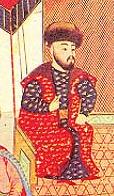 |
| Menly Giray, one of Haci Giray's sons, Ottoman miniature |
On 27 January 1556, Humayun, with his arms full of books, was descending the staircase from his library when the muezzin announced the Azaan (the call to prayer). It was his habit, wherever he heard the summons, to bow his knee in holy reverence. Trying to kneel, he caught his foot in his robe, tumbled down several steps and hit his temple on a rugged stone edge. He died three days later. His body was laid to rest in Purana Quila initially, but because of attack by Hemu on Delhi and capture of Purana Qila, Humayun's body was exhumed by the fleeing army and transferred to Kalanaur in Punjab where Akbar was coronated. His tomb stands in Delhi, where he was later buried in a grand way.
That's why I always say: "Avoid the Religions which don't have their origins with the Mongoloid people."
Nothing against Islam, but Tengri and the Dao and Tian and the Great Spirit have always led us to greater accomplishments. The Song dynasty was innovative and enlightened because of Daoism(and experienced a civilizational setback when the predominantly Buddhist Yuan Mongol Dynasty conquered them militarily, basically putting an end to what could have been a Great Divergence rooted in East Asia) , Genghis Khan and his sons established the largest Empire the world had ever seen because they worshipped Tengri and the Steppe. I would say that non- Mongoloid religions promoted at the various Mongol courts were a major factor in the disunity among Genghis' later descendants.
 |
| 1550 painting. Full of big and strong Mongoloid Men with nice Central Asian swords. And a beta race servant leading the horse in the bottom right. |
Gao Wei Guang pleasuring, owning, fucking, using, breeding and enjoying Ainy Jaffri's/ Shruti Hassan's sweet fertile little fragile brown body, filling all her holes, giving her stomach bulges she'll never forget, making passionate love to her with his Thick Fat Veiny Masculine Golden Chinese Cock to the music of AOMG's ELO:
What about the army with which the Mughals under Babur of the Timurid House invaded the Subcontinent?
Some Mongolian Man as Babur
Either him or these guys:
Babur's memoirs form the main source for details of his life. They are known as the Baburnama and were written in Chaghatai Turkic, his mother-tongue.
Babur was born on 14 February [O.S. ] 1483[12] in the city of Andijan, Andijan Province, Fergana Valley, contemporary Uzbekistan. He was the eldest son of Umar Sheikh Mirza,[13] ruler of the Fergana Valley, the son of Abū Saʿīd Mirza (and grandson of Miran Shah, who was himself son of Timur) and his wife Qutlugh Nigar Khanum, daughter of Yunus Khan, the ruler of Moghulistan (and great-great grandson of Tughlugh Timur, the son of Esen Buqa I, who was the great-great-great grandson of Chaghatai Khan, the second-born son of Genghis Khan).[14]
Takashi Ukaji (height:189cm) as Umai Shaikh Mirza
Babur hailed from the Barlas tribe, which was of Mongol origin and had embraced Turkic[15] and Persian culture.,[16] they had also converted to Islam centuries earlier and resided in Turkestan and Khorasan. Aside from the Chaghatai language, Babur was equally fluent in Persian, the lingua franca of the Timurid elite.[17]
Hence Babur, though a Mongol (or Moghul in Persian language), drew much of his support from the local Turkic Central Asia, and his army was diverse in its ethnic makeup. It included small contingents of Persians (known to Babur as "Sarts" and "Tajiks"), ethnic Afghans, with the Barlas and Chaghatayid Turko-Mongols from Central Asia being the predominant element and backbone of his military.[18]
 |
| Babur's jawline was Mongoloid as fuck. Actually, everything about him was Mongoloid as fuck. |
 |
| Proud Mongoloid father Babur, proud Mongoloid son Humayun. Family time. Talking about warfare and tea and bitches. Those clothes are very Central Asian/ East Asian. |
Most territories around his kingdom were ruled by his relatives, who were descendants of either Timur or Genghis Khan, and were constantly in conflict.[6] At that time, rival princes were fighting over the city of Samarkand to the west, which was ruled by his paternal cousin. Babur had a great ambition to capture it, and in 1497 besieged Samarkand for seven months before eventually gaining control over it.[21] He was fifteen years old and for him, this campaign was a huge achievement.[6] Babur was able to hold it despite desertions in his army but later fell seriously ill. Meanwhile, a rebellion back home, approximately 350 kilometres (220 mi) away, amongst nobles who favoured his brother, robbed him of Fergana.[21] As he was marching to recover it, he lost the Samarkand to a rival prince, leaving him with neither Fergana nor Samarkand.[6] He had held Samarkand for 100 days and he considered this defeat as his biggest loss, obsessing over it even later in his life after his conquests in India.[6]
 |
| Babur was driven out of Transoxiana by Muhammad Shaybani Khan, another descendent of Genghis Khan. He wasn't all that great. Defeated by some persian of the Safavid dynasty and had his skull made into a cup. Disgraceful. |
In 1501, he laid siege to Samarkand once more, but was soon defeated by his most formidable rival, Muhammad Shaybani, Khan of the Uzbeks.[21][22] Samarkand, his lifelong obsession, was lost again. He tried to reclaim Fergana but lost it too and escaping with a small band of followers, he wandered to the mountains of central Asia and took refuge with hill tribes. Thus, during the ten years since becoming the ruler of Fergana, Babur suffered many short-lived victories and was without shelter and in exile, aided by friends and peasants.[23] He finally stayed in Tashkent, which was ruled by his maternal uncle. Babur wrote, "During my stay in Tashkent, I endured much poverty and humiliation. No country, or hope of one!"[23] For three years Babur concentrated on building up a strong army. By 1502, Babur had resigned all hopes of recovering Fergana, he was left with nothing and was forced to try his luck someplace else.[24]
Kabul was ruled by Ulugh Begh Mirza of the Arghun Dynasty(They claimed their descent and name from Ilkhanid-Mongol Arghun Khan,[1] and were a dynasty of either Mongol,[2] Turkic or Turco-Mongol ethnicity.[3]), who died leaving only an infant as heir.[23] The city was then claimed by Mukin Begh, who was considered to be a usurper and was opposed by the local populace. In 1504, Babur was able to cross the snowy Hindu Kush mountains and capture Kabul from the remaining Arghunids, who were forced to retreat to Kandahar.[21] With this move, he gained a new kingdom, re-established his fortunes and would remain its ruler until 1526.[24] In 1505, because of the low revenue generated by his new mountain kingdom, Babur began his first expedition to India; in his memoirs, he wrote, "My desire for Hindustan had been constant. It was in the month of Shaban, the Sun being in Aquarius, that we rode out of Kabul for Hindustan". It was a brief raid across the Khyber Pass.[23]
In the same year, Babur united with Sultan Husayn Mirza Bayqarah of Herat, a fellow Timurid and distant relative, against their common enemy, the Uzbek Shaybani.[25] However, this venture did not take place because Husayn Mirza died in 1506 and his two sons were reluctant to go to war.[23] Babur instead stayed at Herat after being invited by the two Mirza brothers. It was then the cultural capital of the eastern Muslim world. Though he was disgusted by the vices and luxuries of the city,[26] he marvelled at the intellectual abundance there, which he stated was "filled with learned and matched men".[27] He became acquainted with the work of the Chagatai poet Mir Ali Shir Nava'i, who encouraged the use of Chagatai as a literary language. Nava'i's proficiency with the language, which he is credited with founding,[28] may have influenced Babur in his decision to use it for his memoirs. He spent two months there before being forced to leave because of diminishing resources;[25] it later was overrun by Shaybani and the Mirzas fled.[26]
Babur began relations with the Safavids when he met Ali Mirza Safavi at Samarqand; their good relations lasted even after Babur was approached by the Ottomans. The Safavids army led by Najm-e Sani massacred civilians in Central Asia and then sought the assistance of Babur, who advised the Safavids to withdraw. The Safavids, however, refused and were defeated during the Battle of Ghazdewan by the warlord Ubaydullah Khan(also a Genghisid descendant).[33]
Mongoloid(descent) brothers sharing warfare technology: Babur's early relations with the Ottomans were poor because the Ottoman Sultan Selim I provided his rival Ubaydullah Khan with powerful matchlocks and cannons.[34] In 1507, when ordered to accept Selim I as his rightful suzerain Babur refused, and gathered Qizilbash servicemen in order to counter the forces of Ubaydullah Khan during the Battle of Ghazdewan. In 1513, Selim I reconciled with Babur (fearing that he would join the Safavids), dispatched Ustad Ali Quli the artilleryman and Mustafa Rumi, the matchlock marksman, and many other Ottoman Turks, in order to assist Babur in his conquests; this particular assistance proved to be the basis of future Mughal-Ottoman relations.[35] From them, he also adopted the tactic of using matchlocks and cannons in field (rather than only in sieges), which would give him an important advantage in India.[32]
Babur still wanted to escape from the Uzbeks, and finally chose India as a refuge instead of Badakhshan, which was to the north of Kabul. He wrote, "In the presence of such power and potency, we had to think of some place for ourselves and, at this crisis and in the crack of time there was, put a wider space between us and the strong foeman."[32] After his third loss of Samarkand, Babur gave full attention on conquest of India, launching a campaign, he reached Chenab, now in Pakistan, in 1519.[24] Until 1524, his aim was to only expand his rule to Punjab, mainly to fulfil his ancestor Timur's legacy, since it used to be part of his empire.[32]
Babur started his campaign in November 1525. He got news at Peshawar that Daulat Khan Lodi had switched sides and drove out Ala-ud-Din. Babur then marched onto Lahore to confront Daulat Khan Lodi, only to see Daulat's army melt away at their approach.[24] Daulat surrendered and was pardoned, thus within three weeks of crossing the Indus River Babur became the master of Punjab.
Babur marched on to Delhi via Sirhind. He reached Panipat on 20 April 1526 and there met Ibrahim Lodi's numerically superior army of about 100,000 soldiers and 100 elephants.[24][36] In the battle that began on the following day, Babur utilised the tactic of Tulugma, encircling Ibrahim Lodi's army and forcing it to face artillery fire directly, as well as frightening its war elephants.[36]
Ibrahim Lodi died during the battle thus ending the Lodi dynasty.[24]
Babur wrote in his memoirs about his victory :
By the grace of the Almighty God, this difficult task was made easy to me and that mighty army, in the space of a half a day was laid in dust.[24]After the battle, Babur occupied Delhi and Agra, took the throne of Lodi, and laid the foundation for the eventual rise of Mughal Rule in India; however, before he became India's ruler, he had to fend off challengers, such as Rana Sanga.[41]
There are no descriptions about Babur's physical appearance, except from the paintings in the translation of the Baburnama prepared during the reign of Akbar.[23] In his autobiography, Babur claimed to be strong and physically fit, and claimed to have swum across every major river he encountered, including twice across the Ganges River in North India.[43]
In his first marriage, he was "bashful" towards Aisha Sultan Begum, later losing his affection for her.[44] However, he acquired several more wives and concubines over the years, and as required for a prince, he was able to ensure the continuity of his line; Babur treated them and his other female relatives well.
Babur's first wife, Aisha Sultan Begum, was his cousin, the daughter of Sultan Ahmad Mirza, his father's brother. She was an infant when betrothed to Babur, who was himself five years old. They married eleven years later, c. 1498-99 AD. The couple had one daughter by her, Fakhr-un-Nissa, who died within a year in 1500. Three years later, after Babur's first defeat at Fergana, Aisha left him and returned to her father's household.[46][32] In 1504, Babur married Zaynab Sultan Begum, who died childless within two years. In the period 1506-08, Babur married four women, being Maham Begum (in 1506), Masuma Sultan Begum, Gulrukh Begum and Dildar Begum.[46] Babur had four children by Maham Begum, of whom only one survived infancy. This was his eldest son and heir, Humayun. Masuma Sultan Begum died during childbirth; the year of her death is disputed (either 1508 or 1519). Gulrukh bore Babur two sons, Kamran and Askari, and Dildar Begum was the mother of Babur's youngest son, Hindal.[46] Babur later married Mubaraka Yusufzai, a Pashtun woman of the Yusufzai tribe. Gulnar Aghacha and Nargul Aghacha were two Circassian slaves given to Babur as gifts by Tahmasp Shah Safavi, the Shah of Persia. They became "recognized ladies of the royal household."[46]
During his rule in Kabul, when there was a relative time of peace, Babur pursued his interests in literature, art, music and gardening.[32] Previously, he never drank alcohol and avoided it when he was in Herat. In Kabul, he first tasted it at the age of thirty. He then began to drink regularly, host wine parties and consume preparations made from opium.[26] Though religion had a central place in his life, Babur also approvingly quoted a line of poetry by one of his contemporaries: "I am drunk, officer. Punish me when I am sober". He quit drinking for health reasons before the Battle of Khanwa, just two years before his death, and demanded that his court do the same. But he did not stop chewing narcotic preparations, and did not lose his sense of irony. He wrote, "Everyone regrets drinking and swears an oath (of abstinence); I swore the oath and regret that."[47]
In his own words, "The cream of my testimony is this, do nothing against your brothers even though they may deserve it."
Also, "The new year, the spring, the wine and the beloved are joyful. Babur make merry, for the world will not be there for you a second time."
Nini Badurashvili as Gulnar Aghacha
Hideo Muraoka as Gulnar Aghacha's son
Elena Satine as Nargul Aghacha
Benjamin Tang as Nargul Aghacha's son
Neha Sharma(this little girl is cute af) as Mubaraka Yusufzai, (other names Bibi Mubaraka, Mubarika Yusufzay, Bika Begum, Afghani Aghacha) became known as Bega Begm was the Empress consort of the Mughal Empire as the wife of Babur, the founder of the Mughal Empire and the first Mughal emperor.
Biography
She was born in Pashtun family of present Pukhtunkhwa. She belonged to the Yusufzai tribe of Pashtuns and from the state of Swat in Pakhtunkhwa, in the Yusufzai dominated territory. She was the daughter of Malik Shah Mansur Yusufzai who was the chieftain of the Yusufzai during the time of Babur and grand daughter of Suleman Shah, who was the elder of the Yusufzais during the reign of Alag Baig in Kabul.It is thought that Babur married her to form an unspoken alliance with the Yusufzai Pashtuns so that they will give him and his armies a safe passage to the capital of the Lodi Empire in Delhi, India. The marriage of Bibi Mubaraka and Babur is believed to be a very interesting story. Babur met Bibi Mubaraka as a beggar when she was distributing foods among other beggars. She asked him to pray against Babur as the Yusufzais were not happy with his invasion. Her marriage to Babur on 30 January 1519, at Kehraj sealed an important pact between the Yusufzai and the Mughal, making it possible for Babur to strengthen his hold in India with the support of the Yusufzai or rather that he faced less trouble from them.
Bibi Mubaraka has been a very intriguing figure in the history of the Yusufzai and there is very little about her that is ever mentioned in history books. Her claim to fame seems to be that she is one of Babur’s ten wives and she persuaded Humayun to inter Babur’s remains in his favorite garden in Kabul. Bibi Mubaraka lived through Babur's reign and she died early in Humayun's reign on 17 June 1631.
Theme song for Babur and Mubaraka's first meeting [Gray - "Summer Night"]:
 |
| Mubaraka Yusufzai's/Neha Sharma's children with Babur |
Bonus:
Fakhr-un-Nissa (died 1501) was a Mughal princess as the eldest child of the first Mughal Emperor Babur and his Empress consort Aisha Sultan Begum.[1]
Fakhr-un-Nissa was born in 1501 in Samarkand to the nineteen-year-old Babur and his first wife, Aisha Sultan Begum. Upon her birth, she was given the name of Fakhr-un-Nissa ("Glory of Women").[2] The princess died a month or forty days after her birth, and her death grieved Babur the most as he dearly loved his daughter.(Sad as fuck)
Anyways, I present to you the Mughal military men:
 |
| need some flower boys for the young women |
Hindu
Princesses can only admire the Mongoloid Alpha Males. Dance for me,
beautiful little Indian girl. All girls listed below are concubines and
sex slaves and entertainment for the Mongoloid Man, part of the Mughal
Man's Grand Harem.
All Indian pussy, no, all beautiful subcontinental brownskin and beigeskin and oliveskin pussy belongs to the Superior Goldenskinned Mongoloid Man. The dusky and doe eyed brown girl's pussy and womb and body is owned by the Superior Golden Man and will only be enjoyed by the Superior Golden Man.
Alauddin Khilji commands: "Now. Get on your knees, put your hands behind your back and suck on that thick Mongoloid Man Cock. Don't be shy. Cuddle with my Girthy Golden Cock, speak Hindi/Punjab/Farsi/Tamil/Georgian to my Thick Veiny Bulging Mongoloid Dick, cutie."
And they obey, smiles on their faces. Happy to serve Great Golden Men, Proud and Noble sons of Baikal. Know that you have been blessed with the Goldenskinned Man's Mongoloid Cum, know that you have been bred by Goldenskinned Man's Mongoloid Cum, know that our children will be superior.
 |
| Godfrey Gao |
 |
| Gao Yixiang |
Obviously, we will give the audience plenty of romantic scenes and also lots of sexual scenes with great chemistry, some sweet and cuddly moments inbetween, make the Indian actresses feel beautiful and safe and special in our strong Masculine Mongoloid arms, maybe even date or marry some of them and show them around in our East Asian Mongoloid home countries, to convert your Indian daughters, sisters, wives and mothers to Thick Mongoloid Penis. Probably going to hire some Mongoloid Men from the North East of India to play the Conquerors of the Ahom Kingdom who conquered Hindu pussy and managed to defeat the later Mughals numerous times. Their Kingdom lasted for more than 600 years until they were annexed by the expansive Burmese Empire.
Also,
we'll end Zhu Zhu's career. That's a must. Make her beg on the streets
for food and money like the shitstain beta race-worshipping yellow slut
that she is.
----------------------------------------------------------------------------------------------------------------------Bonus:
Better be grateful that we brought superior civilization, language, architecture, science, art, technology and infrastructure to your shitstain subcontinent. Better be grateful that we gave you superior history to look back on and superior Mongoloid Men for you to admire, respect, emulate, worship and masturbate to.
Also, didn't we build the Taj Mahal? Shah Jahan was just romantic like that, it's the Mongoloid genes expressing themselves. He knew he was a motherfucking Mongol descendant. Maybe we should just reclaim that shit and plaster Mongoloid Male faces all over businesses calling themselves anything related to the Mughal Dynasty from restaurants to tv channels to banks because I'm pretty sure that's what he would have wanted.
Making money off our architectural achievements- You brownskin betas have it easy, don't you. Whenever you meet a Goldenskinned Man, better kiss his shoes, lick his soles clean and offer your girlfriend(if you even have one, seems rather unlikely) to him for all his contributions to your pathetic inferior existence.
Same goes for the Persians. They better be grateful we even made Persianate Society a thing in the first place and offer us their belongings and their pretty Persian wives' and daughter's vaginas in return for us having taken their culture and transformed it into something that can be appreciated. As we all know, before the Mongoloid Man came around to conquer the Middle East, Persian culture was utter shit. Persian Painting and Architecture reached its zenith with the Superior Mongoloid Man's vision and ingenuity.
 |
| In
his favorite paintings Shah Jahan and his sons still look pseudo-
Mongoloid. Why's that? Haha, this brother by the name of Shah Jahan was
motherfucking proud to be a Mongol and felt like a Mongol |
Urdu language
 |
| Humayun's tomb |
 |
| I see pseudo- Dougong construction and domes representing Central Asian Yurts/Tents |
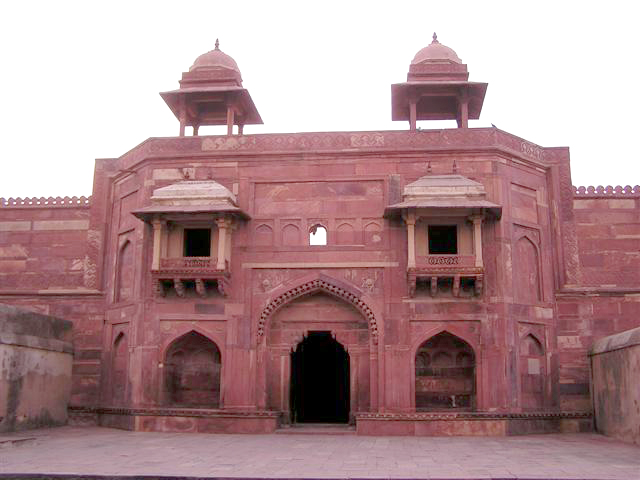 |
| Harem where the Mughal Man goes to fuck his concubines and wives and to entertain his aunts and grandmothers |
Never in the entire History of the Subcontinent did they have a Native Emperor like the Mongoloid Men above. How sad.
Labels:
bollywood,
bomb tanin,
china,
cuckold,
deepika padukone,
gao weiguang,
godfrey gao,
hindu,
india,
jay park,
katrina kaif,
korea,
mongoloid,
oh ji ho,
priyanka chopra,
riya sen,
sakaguchi kenji,
sonam kapoor,
thai
Subscribe to:
Posts (Atom)





























/Riya%20Sen/riya-sen-152a.jpg)

/riya%20sen/riya-sen-124-e.jpg)
/riya%20sen/riya-sen-114-d.jpg)



/riya%20sen/riya-sen-91-h.jpg)






/Bipasha%20Basu/bipasha-basu-178a.jpg)




/bipasha%20basu/bipasha-basu-185-h.jpg)

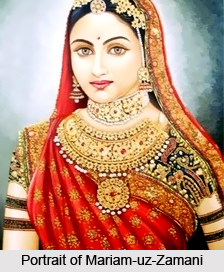


















/Deepika%20Padukone/deepika-padukone-186a.jpg)















com.jpg)


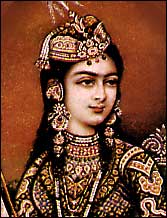
















/Shruti%20Haasan/shruti-haasan-41a.jpg)



























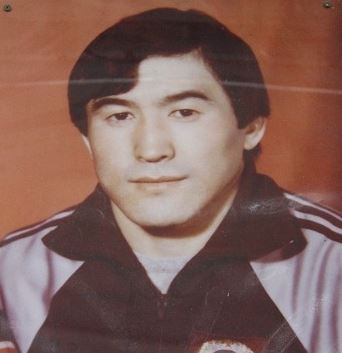















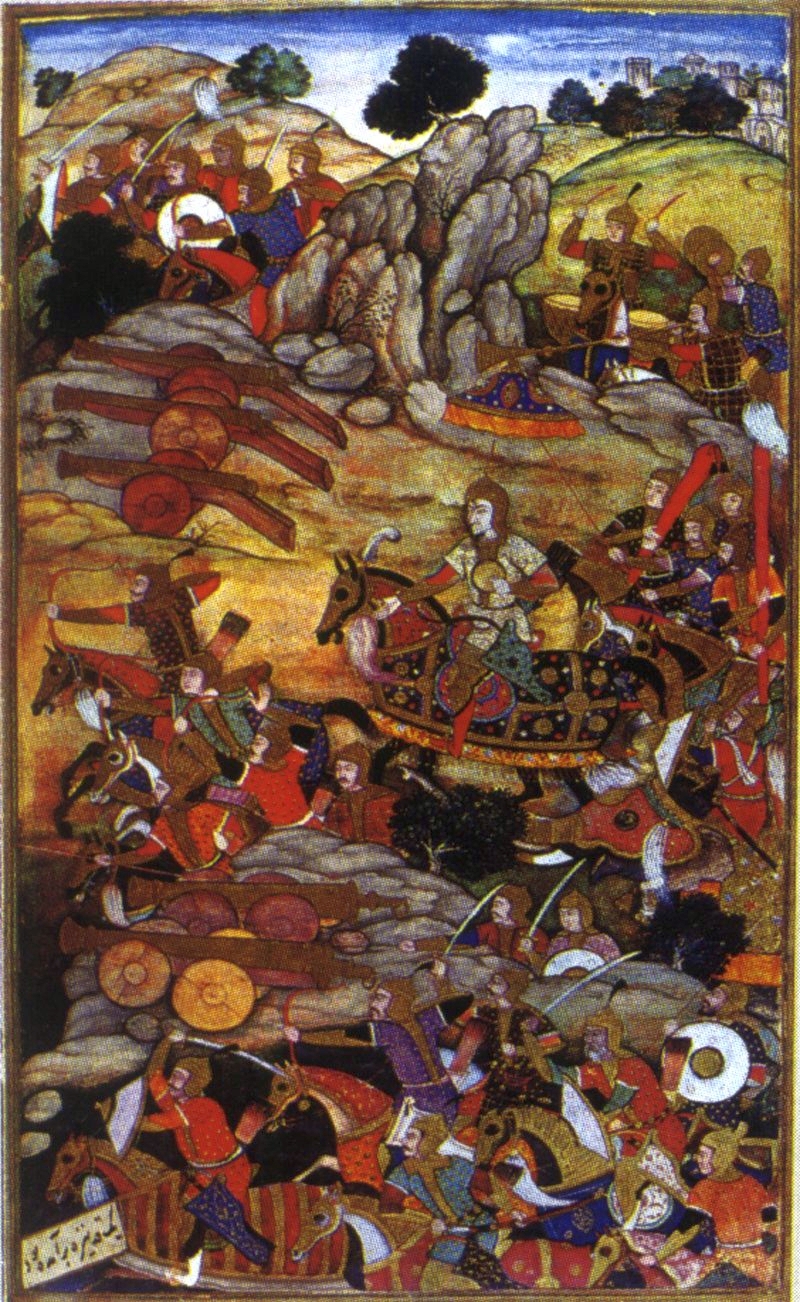
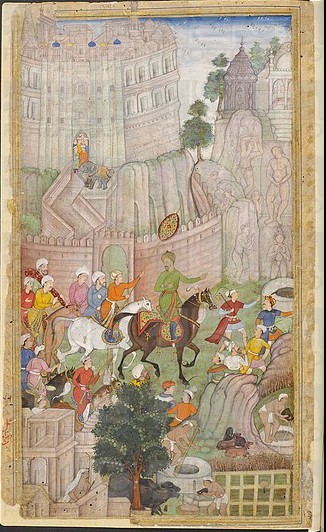



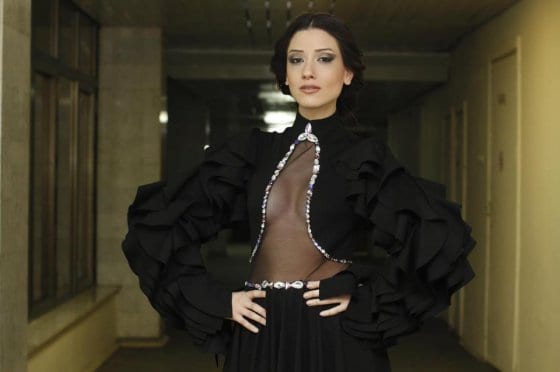

































/Neha%20Sharma/neha-sharma-18a.jpg)

/Neha%20Sharma/neha-sharma-7a.jpg)








.jpg)
.jpg)

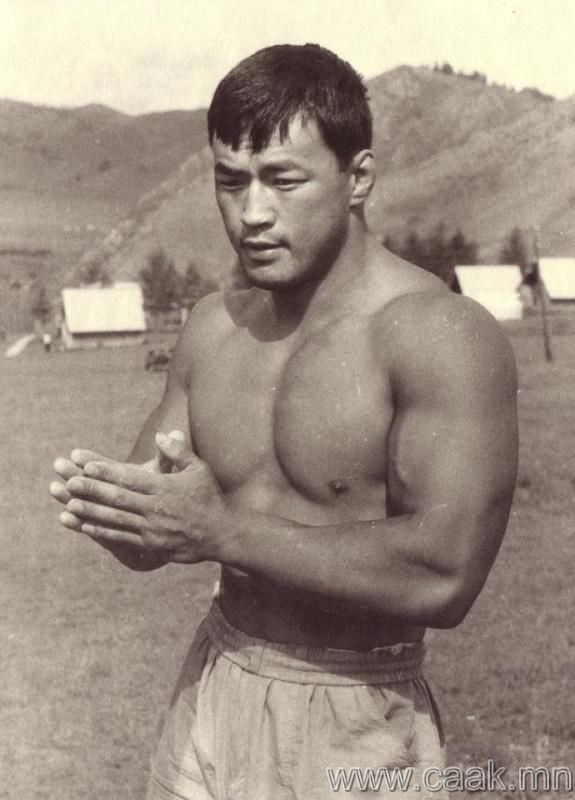








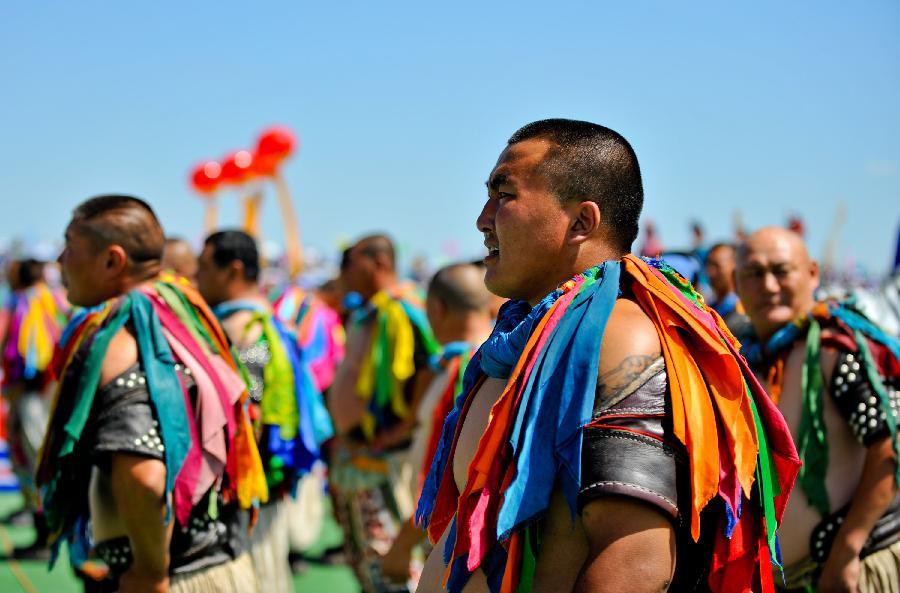







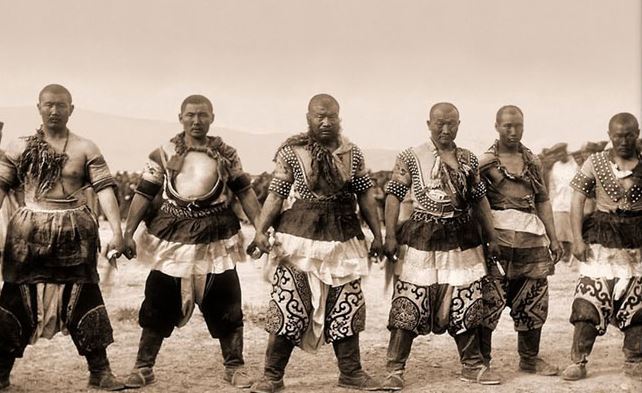


















/Sonam%20Kapoor/sonam-kapoor-49a.jpg)










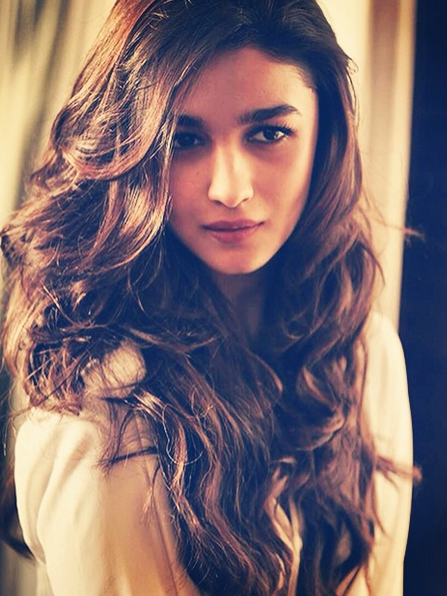








/Diana%20Penty/diana-penty-1a.jpg)
/Sonakshi%20Sinha/sonakshi-sinha-65a.jpg)


/Nargis%20Fakhri/nargis-fakhri-55a.jpg)































/Urvashi%20Rautela/urvashi-rautela-18a.jpg)








/Urvashi%20Rautela/urvashi-rautela-4a.jpg)







/Evelyn%20Sharma/evelyn-sharma-11a.jpg)

/Evelyn%20Sharma/evelyn-sharma-34a.jpg)
/Evelyn%20Sharma/Evelyn-Sharma-166-a_th.jpg)
/Evelyn%20Sharma/evelyn-sharma-39a.jpg)






/Evelyn%20Sharma/evelyn-sharma-15a.jpg)









